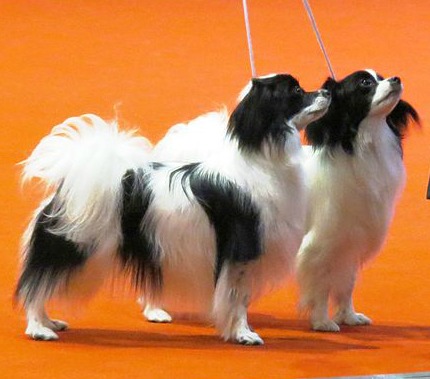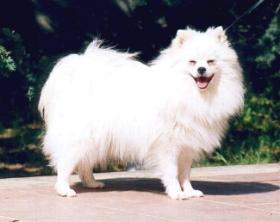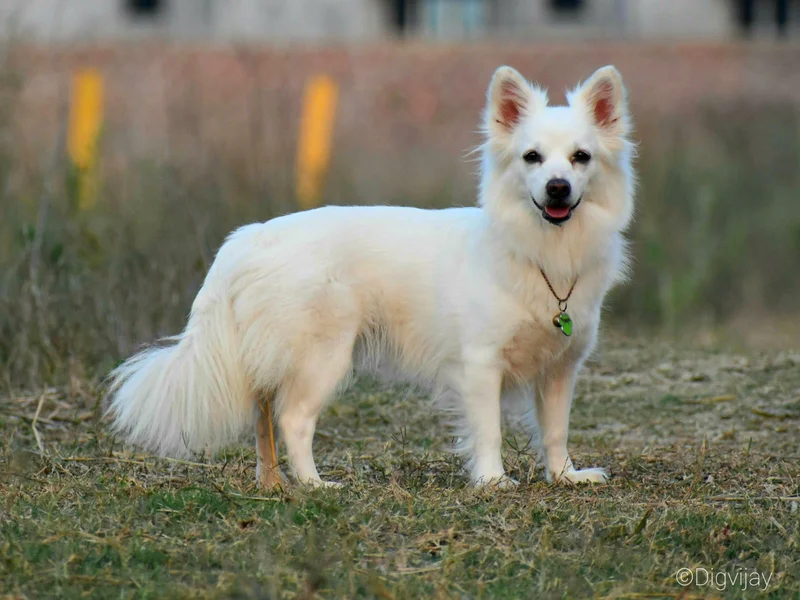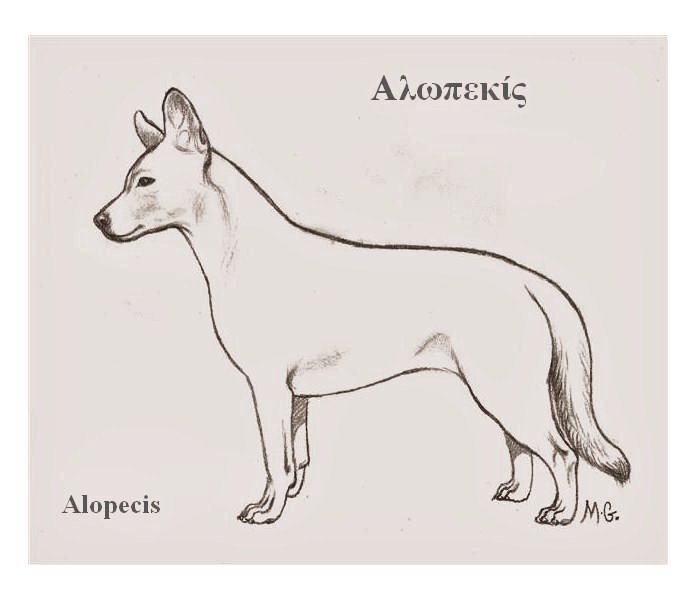Papillon
The Papillon is a small, intelligent, and affectionate toy breed known for its butterfly-like ears. With a playful personality and a friendly demeanor, they excel as companions and therapy dogs.
Overview
🐕Breed Overview
✨Key Traits
💡What Makes Papillon Special
Papillons are characterized by their large, butterfly-like ears, which are their most distinctive feature. They possess a lively spirit and a zest for life, making them delightful companions.
Their intelligence and eagerness to please make training a rewarding experience, and they excel in various dog sports, including agility and obedience. Despite their small size, they have a confident demeanor and are not afraid to stand their ground, especially when it comes to protecting their family.
Their affectionate nature and playful personality make them a joy to have around, and they thrive in environments where they receive plenty of attention and interaction.
The Papillon, a charming and elegant toy breed, is known for its distinctive butterfly-like ears and lively personality. Originating from France, this breed has a rich history intertwined with European nobility, often depicted in art and cherished as a companion. Standing at just 8 to 11 inches tall and weighing between 4 to 11 pounds, Papillons are small yet full of energy.
They are incredibly affectionate, playful, and intelligent, making them excellent family pets and therapy dogs. Their long, silky coat is primarily white with patches of various colors, requiring moderate grooming to maintain its beauty. Papillons thrive on interaction and play, needing daily exercise to keep them happy and healthy.
Their friendly disposition allows them to get along well with children and other pets, although care should be taken to supervise interactions due to their delicate size. With a lifespan of 12 to 15 years, Papillons are known for their longevity and overall good health, though they can be prone to certain minor health issues. Whether participating in agility competitions or simply enjoying a cuddle on the couch, Papillons bring joy and companionship to any home.
🎉Fun Facts
Papillons are known for their agility and often excel in dog sports.
The name 'Papillon' means 'butterfly' in French, referring to their distinctive ears.
They have been depicted in many famous paintings throughout history, showcasing their royal connections.
Breed Characteristics
Family & Friends
Good Behavior
Get Up & Go
Household Harmony
Temperament & Personality
✨Key Traits
🐕Core Temperament
The Papillon is a happy, alert, and friendly breed. They are neither shy nor aggressive, making them excellent companions for families and individuals alike.
Their playful nature allows them to engage well with children, although supervision is necessary to prevent accidental injury due to their delicate size. Papillons are generally sociable with other pets, but proper socialization is essential to ensure they develop positive relationships with other animals.
💫Personality Profile
Papillons are known for their joyful and playful nature. They are highly affectionate and thrive on human companionship, often forming strong bonds with their families.
Their intelligence makes them quick learners, and they enjoy engaging in training and interactive play. While they can be reserved around strangers, they are generally friendly and sociable with other dogs and pets.
Their playful demeanor and energy levels make them suitable for active families, but they can also enjoy quiet time cuddling with their owners. Papillons are alert and make excellent watchdogs, often barking to alert their owners of any changes in their environment.
🔊Vocal Tendencies
Papillons are known for their vocal tendencies, often barking to communicate their excitement or alert their owners to potential intruders. They may bark when playing, greeting visitors, or expressing their needs.
While they are not excessively noisy, their alertness can lead to frequent barking, especially if they are not adequately exercised or mentally stimulated. Early training can help manage their barking behavior, ensuring it remains within acceptable limits.
Affection & Social Traits
Energy & Activity
Communication Style
Care Requirements
🏃♂️Exercise Requirements
Daily Exercise
Papillons are a very active breed despite their small size, requiring regular exercise to maintain their physical and mental well-being. Ideally, they should have at least 30 minutes of exercise each day, which can be broken down into multiple short walks or play sessions.
Activities such as fetch, agility training, or simply running around in a safe, enclosed area are excellent for them. Due to their high energy levels, they thrive on interactive play and mental stimulation, making them suitable for agility courses and obedience training.
For puppies, shorter play sessions are recommended to avoid overexertion, while senior dogs may require gentler activities to accommodate their energy levels and joint health. Regular exercise helps prevent behavioral issues such as excessive barking or destructive tendencies, ensuring that they remain happy and well-adjusted companions.
Preferred Activities
🏠Living & Adaptability
Space Requirements
Papillons are very adaptable and can thrive in various living environments, including apartments and houses with small yards. However, they do require space to play and explore.
In smaller living situations, it's essential to provide them with daily walks and playtime to ensure they get enough exercise. They are sensitive to cold weather due to their single coat, so outdoor time should be limited during colder months.
Owners should create a safe indoor space where the dog can play freely and engage in activities that stimulate their minds.
Climate Preference
🍲Feeding Guide
Schedule
Food Types
Portion Size
Special Nutritional Needs
Papillons may be prone to dental issues, so a diet that supports dental health is recommended. Regular dental care, including brushing and dental chews, is essential. Additionally, monitoring their weight is important to prevent obesity, which can lead to other health problems.
✨Grooming Requirements
Grooming Overview
The Papillon's long, silky coat requires regular grooming to prevent matting and keep it looking its best. Brushing should be done at least twice a week, focusing on the ears, chest, and back of the legs where feathering is prominent.
Bathing should be done as needed, typically every 4-6 weeks, using a gentle dog shampoo. Regular nail trimming and dental care are also essential to maintain overall health.
Pay special attention to the ears, as they can accumulate dirt and moisture, leading to infections if not cleaned regularly.
Care Schedule
Brush twice a week, bathe every 4-6 weeks, trim nails every 2-4 weeks.
Health Profile
⚕️Health Care
Regular veterinary check-ups, vaccinations, and preventive care are crucial for maintaining the Papillon's health and longevity. Early detection of health issues through routine examinations can lead to better outcomes. Owners should also be proactive in managing their dog's dental health, as dental problems are common in small breeds and can impact overall health.
Health Issues Overview
⏳Average Lifespan
Genetic Factors
Genetics play a significant role in the Papillon's lifespan, with certain hereditary health issues being more prevalent in the breed. Responsible breeding practices that prioritize genetic diversity can help reduce the risk of inherited conditions. Potential owners should seek reputable breeders who conduct health testing and provide health guarantees for their puppies.
Living Conditions
Papillons thrive in environments that provide mental stimulation and regular exercise. Living in a home with access to safe outdoor spaces can enhance their quality of life.
They are sensitive to extreme temperatures, particularly cold, so a warm indoor environment is essential. Regular interaction with family members and opportunities for socialization contribute positively to their lifespan and overall happiness.
🏥Common Health Issues
Patellar Luxation
Warning Signs
🔬Diagnosis
Physical examination and X-rays to assess knee stability.
💊Treatment
Surgery may be required in severe cases.
📝Management Tips
Maintain a healthy weight, provide joint supplements, and avoid high-impact activities.
Dental Issues
Warning Signs
🔬Diagnosis
Veterinary dental examination and X-rays.
💊Treatment
Professional dental cleaning and possible extractions.
📝Management Tips
Regular dental cleanings and at-home dental care.
Seizures
Warning Signs
🔬Diagnosis
Neurological examination and possibly an MRI.
💊Treatment
Anticonvulsant medications.
📝Management Tips
Medication may be required to control seizures; keep a log of seizure activity.
🛡️Preventive Care
🔬Knee Evaluation
Evaluates the stability of the knee joint and checks for luxation.
📅 Annually, especially for active dogs.
🔬Eye Examination
Checks for common eye disorders that can affect the breed.
📅 Every 1-2 years, or as recommended by a veterinarian.
🔬Von Willebrand Disease Test
Assesses the dog's blood for potential bleeding disorders.
📅 As needed, especially before surgery or dental procedures.
Training
🧠Intelligence & Trainability
💪Work Drive
Papillons have a strong need for mental and physical stimulation. They enjoy having tasks to perform, whether it's agility training, obedience exercises, or interactive play.
Engaging them in activities that challenge their intelligence, such as puzzle toys or scent games, can help satisfy their work drive. Without sufficient mental engagement, they may become bored and exhibit undesirable behaviors.
⚠️Training Considerations
Papillons can exhibit behavioral challenges if not properly socialized from a young age. They may become distrustful or aggressive towards unfamiliar dogs and people.
To mitigate these issues, early socialization is crucial, exposing them to various environments, people, and other pets. Consistent training using positive reinforcement methods can help address any tendencies towards barking or territorial behavior.
Additionally, providing mental stimulation through puzzle toys and interactive games can prevent boredom-related behaviors.
📝Training Tips
Training a Papillon is generally straightforward due to their intelligence and eagerness to please. Positive reinforcement techniques, such as treats and praise, work best.
Start with basic commands and gradually introduce more complex tasks. Consistency and patience are key, as Papillons thrive on routine.
Incorporating play into training sessions can keep them engaged and motivated. Socialization classes are also beneficial, helping them learn to interact positively with other dogs and people.
History & Heritage
📜Origin Story
The Papillon's story begins in the courts of Europe, where small spaniels were cherished as lapdogs by the nobility. These dogs were often depicted in paintings by renowned artists such as Titian and Rubens, showcasing their popularity among the elite.
The breed's name, Papillon, was inspired by its unique ear shape, resembling butterfly wings. Legend has it that Marie Antoinette carried her Papillon to the guillotine, further cementing the breed's association with French history.
Over the centuries, the Papillon has maintained its status as a beloved companion, adapting to various lifestyles while retaining its charming personality.
⏳Development History
The Papillon's lineage can be traced back to the dwarf spaniel type, known as the Titian Spaniel or Toy Spaniel, which gained popularity throughout Europe in the 16th century. Originally, these dogs had drooping ears, but over time, the erect-eared variety became more fashionable, leading to the breed's modern name.
The Papillon was recognized by the American Kennel Club (AKC) in 1915, and since then, it has become a popular choice for families and individuals alike due to its intelligence and affectionate nature. The breed has evolved through selective breeding, resulting in the distinct characteristics seen today.
🛡️Purpose & Historical Role
Historically, Papillons served as companion dogs for the aristocracy, providing comfort and companionship. They were often seen as 'comforters,' akin to modern lap dogs.
Their intelligence and agility have also made them suitable for various roles, including therapy and assistance dogs. Today, they excel in agility competitions and obedience training, showcasing their versatility beyond companionship.
🏺Cultural Significance
The Papillon has a rich history intertwined with European nobility, particularly in France, where it was favored by royals such as Marie Antoinette. This breed has been depicted in numerous artworks from the 16th century, showcasing its popularity among the elite.
The Papillon's name, meaning 'butterfly' in French, reflects its distinctive ear shape, which resembles butterfly wings. Its presence in royal courts and its association with luxury have solidified its status as a beloved companion breed, making it a symbol of elegance and charm.
Conservation Status
This breed is well-established with healthy population numbers.









